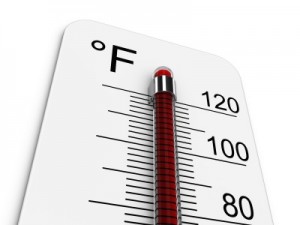 LOS ANGELES, CA – A “flex” alert has been issued urging Southern California electricity customers to limit their power consumption during peak hours in an effort to prevent power blackouts. California Independent System Operator (CAISO) issued the alert as a result of a persistent heat wave that has not abated as formerly expected.
LOS ANGELES, CA – A “flex” alert has been issued urging Southern California electricity customers to limit their power consumption during peak hours in an effort to prevent power blackouts. California Independent System Operator (CAISO) issued the alert as a result of a persistent heat wave that has not abated as formerly expected.
Daily record highs were set yesterday in Lancaster when temperatures reached 109 degrees. The previous record there was 106 set in 1980. A record of 95 was recorded at Sandberg in the Antelope Valley with its previous record being 92 set in 2002.Woodland Hills’s temps topped out at 109, beating by a record set in 2006one degree. Lake Forest and Yorba Linda in Orange County both saw temperatures above 95 and Elsinore in the Inland Empire saw a record of 112 degrees.
Forecasters have issued an excessive heat warning through Friday for several spots in Los Angeles, Ventura and Santa Barbara counties, including mountain ranges and valleys, with triple-digit heat projected in much of the region.
The unyielding heat wave has blanketed Southern California with temperatures up to 10 degrees above normal for this time of year and threatens to stress the state’s power grip to the point of collapse. More people than normal are using their air conditioners greatly taxing and already overloaded energy system.
To make matters worse, the amount of power available has been lowered by the shutdown of the San Onofre nuclear power plant on the Southern California due to a radiationleak .San Onofre, typically supplies about 20% of the power for a large section of Southern California. It has been offline for more than six months because of problems with newly replaced steam generators.
“We are having above-normal temperatures, especially on the coast,” Steven Greenlee, a CAISO spokesman, toldReuters. “We’ve got higher demand because of the temperatures and, as we had anticipated when San Onofre went offline, supplies are getting tighter.”
The Los Angeles Times reports that high temperatures will likely persist throughout the following week, with highs dropping by only a degree or two every day. These conditions could prompt another CAISO alert if energy demand remains as high as it has been.
“The cooling trend … is going to be slower to occur,” said meteorologist David Sweet from the National Weather Service (NWS) to the Times. “It’s not going to be very impressive for a few days.”
According to CAISO, California’s energy grid is capable of producing a maximum of 58,600 megawatts (MW) worth of power. Peak demand last Thursday when the group issued its alert was slightly above 47,000 MW, which is roughly 1,000 MW higher than what CAISO expected in its earlier forecasts. The all-time high for power usage at any given time in California was 50,270 MW on July 24, 2006, which was also during a severe heat wave.
The heat wave in Southern California reflects excessive heat resulting from a large high pressure system centered in the Four Corners region of Utah, New Mexico, Colorado, and Arizona. Weather experts say this system will eventually move eastward, but it could be several days until California and other states feel any relief from it.
 Off The Grid News Better Ideas For Off The Grid Living
Off The Grid News Better Ideas For Off The Grid Living



